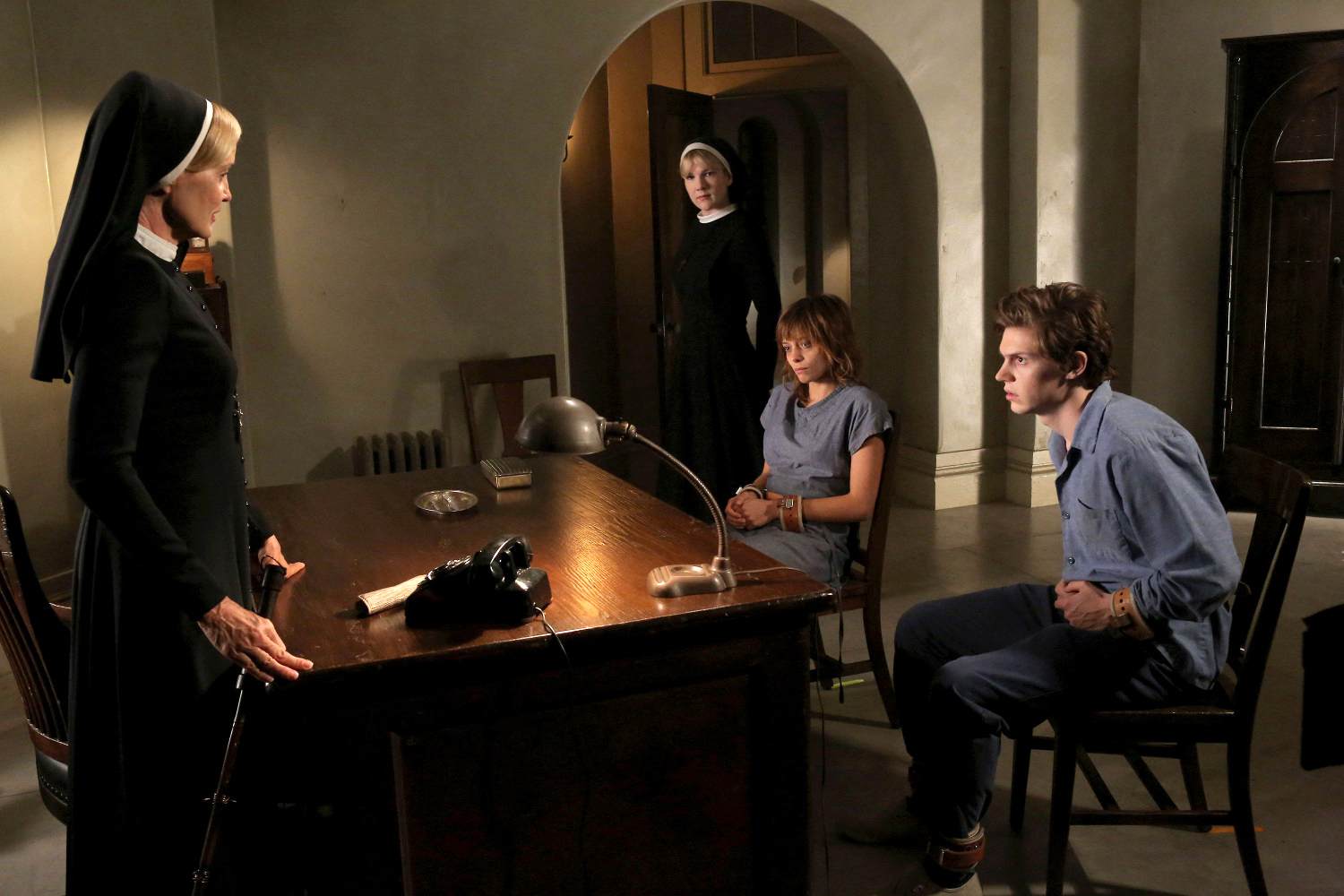
Evan Tate, Jessica Lange and Frances Conroy in “American Horror Story,” wear costumes that Karvonides designed. Karvonides says that she thinks of herself as a visual storyteller when she designs costumes for shows.
The original infobox accompanying this article contained an error and has been changed. See the bottom of the article for additional information.
On an abandoned launch pad near the Kennedy Space Center in Florida, a rusted and locked container held certain intrigue for costume designer Chrisi Karvonides.
With NASA’s approval, she explored the anomaly, not really sure what she would find.
“We literally go out there to (the container) … we conned some guy into it,” Karvonides said. “We took a crowbar, broke the door and there were file cabinets (of) … black-and-white photos of families of astronauts, (and) the astronauts doing every little bit of minutia for the space program.”
Used as points of reference for period-specific costumes, these 40- to 50-year-old images of the Apollo space expeditions helped earn Karvonides an Emmy nomination for the 1998 HBO miniseries “From the Earth to the Moon.”
After years of this extensive and sometimes unconventional costume research, Karvonides started serving as a costume design professor at the UCLA School of Theater, Film and Television just last year, passing along similar tricks, valuable treats and years of experience.
Raised in New York City, the veteran costume designer said she somewhat inherited her love for the discipline from her mother, who often stitched together homemade clothing for Karvonides.
“She would see some amazing thing in the department store … and she would literally buy (it), copy it overnight and return it,” Karvonides said. “It’s in my blood.”
Channeling this learned intuition, Karvonides said she went on to design for theater venues like Boston Opera and Santa Fe Opera, eventually earning a full-ride scholarship to both Emerson College in Boston and Yale School of Drama, where she earned her master of fine arts in theater design.
Still plagued by school loans and debts after graduation, Karvonides moved out to the West Coast to join the lucrative film and television business, where she quickly landed an assistant costume design position for Tim Burton’s 1992 “Batman Returns” and honed her natural ability as a costume designer in the process.
“We all think of ourselves as visual storytellers. Most costume designers you’ll find are really obsessed about telling a story,” Karvonides said. “I love reading about a character and then when the image comes into my mind of who they are, sometimes I can sense the color of what they’re going to be.”
From then on, she said she discovered her passion for working on more fantastical works like “Waterworld,” “Starship Troopers” and most recently, the FX series “American Horror Story.”
Although the lead costumes in these types of films and television shows are usually more extravagant and would seem to be more of a challenge, Karvonides said she’s found it is actually more entertaining for her to design inconspicuous costumes.
“I love doing the huge crowd scenes. When I have to dress 700 people in four hours from head to toe, it’s a thrill,” Karvonides said.
For scenic design graduate student Patrick Scalise, it’s Karvonides’ expertise and his own interest in film and television that led him to take her costume design class.
Scalise, who is also working with Karvonides on an independent study project that focuses on production designers, said Karvonides’ willingness to provide scripts from some of her past works as a form of design practice is an invaluable and uncommon experience. Some of these scripts have included “American Horror Story” and HBO’s “Carnivà le.”
Karvonides said she also emphasizes the business aspect of running a costume design department within her classes, something which she said is often underrepresented.
“What (some) don’t realize, and I think this is one of the problems in schools that teach design, is that most of (the job) is done on paper,” Karvonides said.
“Ninety percent of my day job as a costume designer, I’m a business manager.”
She said finding a balance between managing a costume design department and actually designing for the department is a struggle that she only pulled off in past years because of a lot practice and many sleepless nights.
These organizational skills, attention to detail and dedication to her work are what attracted Alice Garland to Karvonides and her costume design class.
“I think there are a lot of good designers that probably couldn’t teach, but I think (she can because) she’s really good at looking at things from other people’s points of view,” said Garland, a graduate student in costume design.
“Even if she approaches something, and it’s not what she would have done, she’ll be able to understand it and make it work.”
And while Karvonides said she enjoys the thrill of designing, she’s currently focusing on her occupation as a professor at UCLA, but with one stipulation.
“It’s a good place … this is just the right place to be,” Karvonides said. “But I’m not doing anyone’s Halloween costume.”
Correction: The infobox was compiled by Professor Chrisi Karvonides and students in the UCLA School of Theater, Film and Television costume design department.
